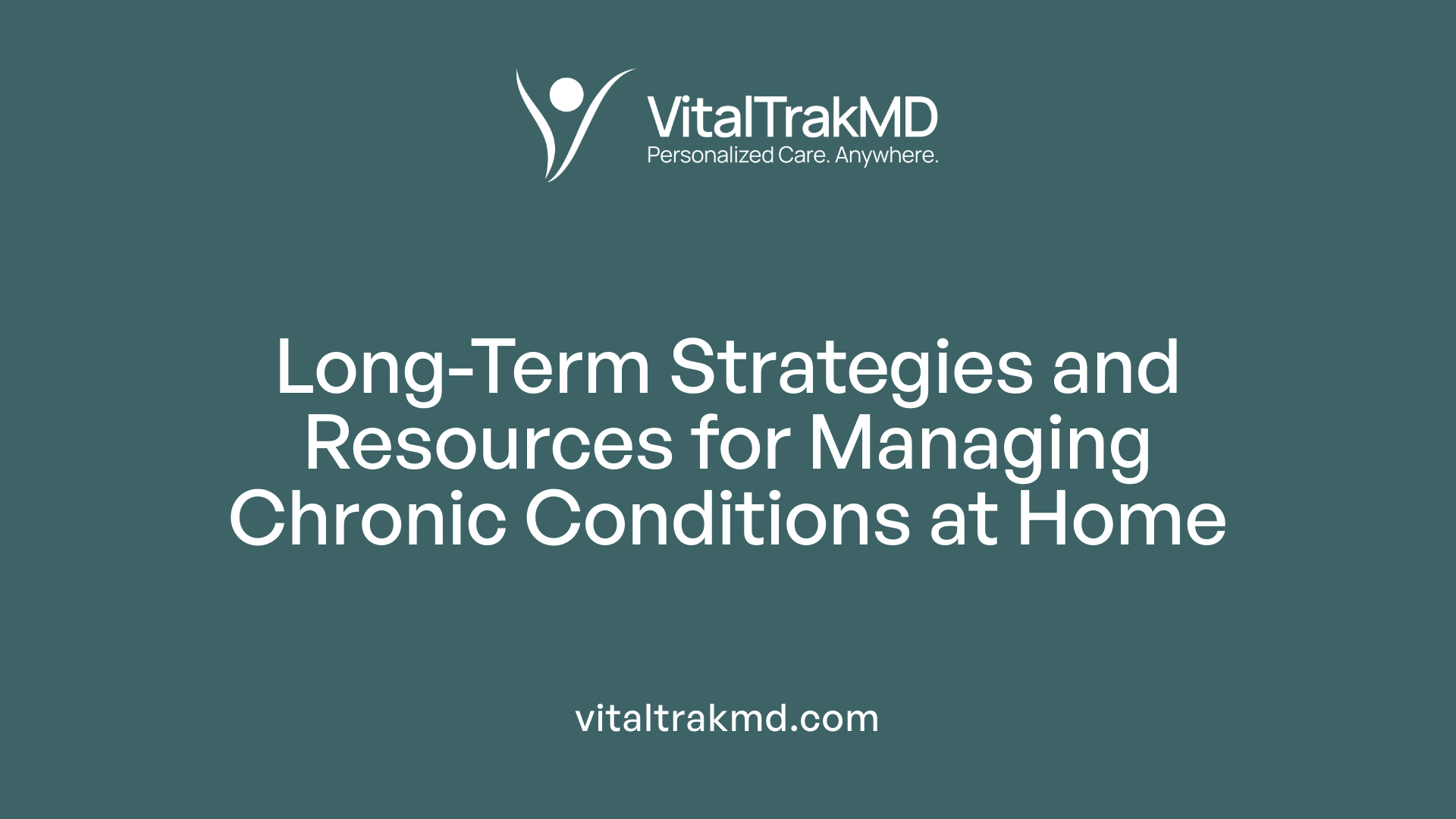Available In-Home Chronic Care Plans for Aging Adults

Understanding In-Home Chronic Care for Older Adults
As the aging population grows, more seniors prefer to live independently at home. In-home chronic care plans are designed to support this desire by offering comprehensive medical and supportive services tailored to meet the unique needs of older adults managing ongoing health conditions. These plans facilitate safe, comfortable, and dignified aging in place, improving quality of life while enabling families to participate actively in care. This article explores the various available services, eligibility considerations, benefits, and resources to help seniors live safely and independently at home.
Comprehensive Range of In-Home Care Services for Seniors
In-home care services for seniors encompass a broad spectrum of medical and non-medical support designed to help older adults remain safe, independent, and comfortable in their own homes. These services include essential medical treatments such as skilled nursing care, physical therapy, occupational therapy, and management of chronic illnesses like diabetes, heart disease, or Alzheimer's. Medicare often covers many of these medically oriented services when delivered under a care plan by certified providers.
Beyond medical assistance, in-home care also offers help with daily activities that are vital for personal well-being. This includes support with bathing, dressing, grooming, medication reminders, mobility, and household chores like cleaning and laundry. Such supports are vital for maintaining dignity and independence. Additionally, services extend to providing companionship, nutritional support through meal preparation, and transportation for appointments or errands.
Support systems like emergency alert systems and safety modifications—such as installing grab bars, ramps, or better lighting—are crucial in preventing falls and ensuring quick response during emergencies. Caregivers may also assist with financial management tasks, such as bill-paying or coordinating health benefits.
These services can be provided by family caregivers, private agencies, or healthcare professionals. Funding sources vary, including private pay, Medicaid, Medicare, or veteran benefits, making in-home care accessible to many seniors.
Overall, the goal of in-home care is to support aging individuals in living with dignity and independence while managing health conditions effectively. It combines medical support, everyday assistance, safety enhancements, and emotional companionship to create a comprehensive care environment tailored to each person's needs.
Search Query: types of in-home senior care services beneficial for managing chronic conditions
Qualification, Coverage, and Cost of In-Home Care Services

How to qualify for home health care under Medicare?
To access home health benefits through Medicare, certain criteria must be met. The individual must be deemed 'homebound,' which means leaving the home is difficult, takes considerable effort, or requires special arrangements. They need ongoing, part-time or intermittent skilled services such as nursing, physical therapy, or speech therapy. A healthcare provider must certify the need for these services and develop a comprehensive care plan. This plan is reviewed and validated through a face-to-face assessment with a licensed healthcare professional. All services are delivered by a Medicare-certified home health agency, ensuring quality and adherence to standards.
The required care typically includes skilled nursing, therapy services, and home health aide assistance. These services are designed to promote recovery, manage chronic conditions, and support older adults in maintaining independence at home. Meeting these qualifications guarantees access to covered services with little to no direct cost for the patient.
What are the coverage details and costs for in-home care plans?
Medicare provides extensive coverage for eligible in-home health services, but specific conditions apply. To qualify, the individual must be 'homebound' and in need of skilled, intermittent care. The services covered include skilled nursing, physical, occupational, and speech therapy, as well as medical social services. These services are all provided under a care plan crafted by the healthcare provider and delivered by certified agencies.
Most costs for covered home health services are included under Medicare, meaning beneficiaries usually pay nothing out of pocket for the services themselves. However, Medicare does not typically cover long-term or custodial personal care, like assistance with bathing or dressing, unless it is part of a skilled care plan.
Cost structures tend to involve a fixed amount billed per 30-day episode rather than an hourly rate. This amount covers all services under the care plan during that period, with adjustments based on the patient’s specific health condition and needs.
| Aspect | Details | Additional Information |
|---|---|---|
| Qualification | Homebound status, face-to-face assessment, need for skilled services | Certified by a healthcare provider, care plan included |
| Covered Services | Skilled nursing, therapy, social services | Provided by Medicare-certified agencies |
| Cost | Usually free for beneficiaries | No personal cost for covered services under Original Medicare |
| Limitations | Not for long-term custodial care | Only for intermittent or part-time skilled care |
Knowing these specifics helps older adults and their families better plan and utilize available home health services, promoting staying comfortably at home with appropriate support.
Long-Term Planning and Resources for Chronic Disease Management

What long-term in-home care options and planning strategies exist for seniors?
Seniors have access to a variety of long-term in-home care services designed to support their health and independence. These include home health services such as skilled nursing, physical therapy, medication management, and wound care. Assistance with daily activities like bathing, dressing, and meal preparation is also available through services that promote aging in place.
Support systems further extend to transportation services, emergency alert systems, and companionship programs to ensure safety and social connection. Planning ahead is crucial; it involves assessing current needs and anticipating future ones. Seniors and their families should consider making home modifications like installing grab bars, ramps, or improved lighting to increase safety.
Financial planning, including savings, long-term care insurance, and exploring government programs like Medicaid, plays an integral role. Legal arrangements such as powers of attorney and advance directives ensure that healthcare and legal wishes are respected. Combining proactive planning with available resources helps seniors manage their conditions comfortably and stay in their homes longer.
What community and legal resources aid in managing chronic conditions at home?
Community programs serve as vital support systems, offering services like meal delivery, transportation, caregiver support, and emergency alert systems. These programs help reduce caregiver stress and promote the well-being of seniors managing chronic illnesses.
Legal tools are also essential; establishing powers of attorney and advance directives ensures that healthcare decisions align with seniors' preferences. Home modifications—such as installing grab bars, ramps, and better lighting—enhance safety and independence.
Resources like the Area Agencies on Aging provide guidance, financial aid, and counseling to help navigate available services. These programs work together to empower seniors, offering comprehensive support to manage conditions like Alzheimer’s, heart disease, or diabetes within the comfort of their homes.
| Aspect | Description | Additional Details |
|---|---|---|
| In-Home Care | Nursing, therapy, medication, personal care | Tailored to individual needs |
| Support Services | Transportation, emergency systems, companionship | Enhance safety and socialization |
| Planning Strategies | Home modifications, legal planning | Focus on safety, autonomy, legal clarity |
| Community Resources | Meal programs, caregiver support, financial aid | Centralized assistance networks |
| Legal Tools | Powers of attorney, advance directives | Respecting care preferences |
This combination of proactive planning, community involvement, and legal preparedness equips seniors to manage chronic illnesses effectively and maintain their independence at home.
Ensuring Safety and Promoting Independence in Home Care

What education and safety measures are essential for daily assistance and health management at home?
Providing safe and effective home care involves a combination of education and safety precautions. Caregivers and family members should be trained in basic medical skills such as medication management, wound care, and monitoring vital signs. This ongoing education helps them stay updated on best practices.
Regular home safety assessments are crucial to identify potential hazards. Common issues include fall risks, poisoning, fire hazards, and environmental dangers. Once identified, necessary modifications like installing grab bars, fire alarms, improving lighting, and removing tripping hazards can significantly enhance safety.
Implementing safety routines, checklists, and proper use of medical devices ensures smoother health management. Education on infection control, emergency response procedures, and maintaining psychological well-being is vital in creating a safe home environment.
Coordination with healthcare providers to develop personalized care plans further enhances safety. These plans address specific needs such as dementia care or managing chronic illnesses, helping seniors live independently with dignity and confidence.
How can technology improve safety and health management at home?
Advances in technology have transformed home health care, making safety and health management more effective. Medical alert systems allow seniors to quickly summon help during emergencies, providing peace of mind to families.
Telehealth services enable virtual doctor visits and ongoing health monitoring, reducing the need for travel and facilitating immediate medical advice. Smartphone apps and remote monitoring devices track vital signs, medication adherence, and detect early signs of health deterioration, alerting caregivers and professionals promptly.
Home modification technologies such as smart lighting, fall detection sensors, and automatic door locks contribute to a safer living space. These tools help prevent accidents, support independent living, and enable timely intervention.
Proper education on using these technological tools is essential to ensure safety and optimize their benefits. When integrated thoughtfully, technology enhances safety, promotes independence, and improves the overall quality of care for aging adults.
Maximizing Benefits and Enhancing Quality of Life through In-Home Care
 In-home care services are vital for supporting older adults' health and well-being, allowing them to live comfortably and safely in familiar surroundings. These services include medication management, assistance with daily activities, mobility support, and safety modifications such as home safety assessments and emergency alert systems.
In-home care services are vital for supporting older adults' health and well-being, allowing them to live comfortably and safely in familiar surroundings. These services include medication management, assistance with daily activities, mobility support, and safety modifications such as home safety assessments and emergency alert systems.
Promoting physical health is a core benefit of in-home care. Healthcare providers conduct regular visits to administer medications, perform wound care, and monitor chronic conditions like diabetes, heart disease, or arthritis. Physical therapy services help improve mobility and recovery from injuries or illnesses, boosting overall physical strength and independence.
Addressing emotional well-being is equally important. Regular companionship, mental health counseling, and social engagement help reduce feelings of loneliness and depression often experienced by seniors. Providing emotional support fosters a sense of security and connectedness, which positively impacts mental health.
Care plans are personalized to align with individual needs. Health professionals develop tailored programs that account for specific health conditions, mobility levels, and personal preferences. This customization ensures that care is effective and respectful of each person's dignity.
The combined effect of these services maximizes benefits for aging adults. They help maintain independence, promote safety, and improve emotional health, leading to a higher quality of life. Families also benefit by being actively involved in their loved ones' care, reducing stress and ensuring peace of mind.
In essence, comprehensive in-home care integrates medical support with emotional and social care, creating a holistic approach that helps seniors live with comfort, dignity, and independence.
Supporting Aging at Home: Resources and Continuity of Care
In-home chronic care plans provide a vital framework for supporting aging adults in managing their health, maintaining independence, and enjoying a high quality of life. With a broad spectrum of services tailored to individual needs—from skilled nursing and therapy to daily living assistance and safety modifications—these programs empower seniors to age comfortably in their preferred environments. Access to government programs like Medicare, as well as community resources and innovative technologies, further enhances the effectiveness and affordability of home-based care. As the demand for aging-in-place options continues to grow, understanding available in-home care plans and how to navigate them becomes essential for seniors and their families seeking compassionate, comprehensive support.
References
- Services for Older Adults Living at Home | National Institute on Aging
- Home Health Services Coverage - Medicare
- Live Well with Our Home Care Services - Home Instead
- Caregiver Resources & Long-Term Care - HHS.gov
- Caregiving News to Help Seniors Find In-Home Care - AARP
- Health Services for Homebound Adults | Important Considerations
- Chronic Care Management Healthcare Coordination | Alanté
- How to Manage Chronic Conditions in Older Adults - Kendal at Home
- Home Health Services Coverage - Medicare
Recent articles
Want to Feel Better and Live Healthier?
Join hundreds of patients taking control of their health with personalized care that fits their life – not the other way around.
Rated 4.8/5 by 32+ customers







